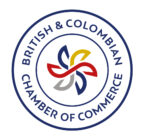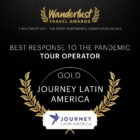Redefining the Ruta Maya

It's every traveller's dream to find somewhere virtually unexplored.
Somewhere off the beaten track, where dogs yelp and kids scream at the sight of your alien gringo features. Somewhere that will prompt even the most grizzly career backpacker to sit up and listen as the conversation ebbs and flows between the relative dangers of hiking the Darién Gap or dodging Tuareg bandits in the southern Sahara.
The trouble is that even in the relatively underdeveloped Maya World - southern Mexico, Belize, Guatemala and a slice of El Salvador and Honduras - there is a well-trodden trail that runs between all the most impressive sights. Starting with Mérida and Chichén Itzá in Mexico, it routes past Tulum, goes offshore to Caye Caulker in Belize and then into Guatemala; stopping at Tikal, Antigua and Chichicastenango, before looping back into Mexico to visit San Cristóbal de Las Casas and Palenque.
La Ruta Maya, as it’s been dubbed, undoubtedly takes in the highlights of the region: the best restored Mayan temples, the most graceful colonial cities, smoking volcanoes and the kaleidoscopic spectacle of highland markets. The downside is that by sticking to the trail, the sense of discovery that all travellers crave is diluted. But if you really yearn for some adventure travel, there are myriad opportunities to create your own ruta via volcanoes and jungle.
Guatemala, with a Mayan population of around six million, offers almost indecent potential for off-ruta exploration. The only Mayan ruin that most people see is Tikal, for me the most spectacular of all sites. With its five colossal temple pyramids; plazas, ceremonial altars and stelae buried alive in the eponymous National Park, Tikal screeches with unadulterated jungla rumble from the resident howler monkeys, toucans and parakeets. Yet beyond Tikal there are so many more ruined cities in the forests of Petén within striking distance.
Uaxactún is the simplest to reach. It’s a much smaller site than Tikal, lying 24 km to the north along a dirt track. The temple structures may lack Tikal’s scale and grandeur but during the pre-Classic Maya period (250BC-250AD) the two cities were of comparable importance, although both were dominated by the Mayan World’s first superpower, the giant city of El Mirador further to the north.
Of the hundreds of Mayan sites in the entire region, El Mirador is probably the most mystical. As the ruins themselves have barely started to be reconstructed, it’s the adventure of getting there through the forest reserve that's the real thrill - the remoteness offers the best possible opportunity to catch a glimpse of the region’s abundant wildlife. The cacophonous howler monkey, acrobatic spider monkey, giant iguana, raccoon-like coatimundi, weasel-like tayra, scarlet macaw, lumbering tapir and the jaguar, "King of the Forest", all live here.
El Mirador’s triadic pre-Classic temples are nothing short of monumental. El Tigre complex reaches a height of 70 metres. For about two thousand years, until the first skyscrapers were constructed in New York, it was the tallest man-made structure in the Americas. Gazing north-east from the top of the temple it’s possible to see deep into Mexico and pick out the jungle-covered temple mounds of Calakmul; to the south is Nakbé, site of more giant temples and a giant stucco mask measuring 5 metres by 8 metres. The mind wanders and wonders: How did this civilisation, the greatest in all pre-Columbian America, collapse so quickly at the height of the Classic era around 850AD?
Whatever environmental or social catastrophes precipitated the fall of the Classic Maya, the people certainly didn't disappear. In the highlands of Guatemala and Chiapas, Mayan culture has survived despite the brutality of conquest, waves of European disease and centuries of persecution. In the Ixil triangle - made up of the towns of Nebaj, Chajul and Cotzal - Mayan customs are still overwhelmingly evident. If you can't make Nebaj’s August fiesta, with its week long marimba marathon and symbolic dances, then the weekly market is a good second best.
From dawn the dusty, adobe house-lined streets come alive as traders bring their vegetables and chickens. The women arrive in traditional costume: fantastic geometric huipil blouses, scarlet skirts, hair decorated with stunning woven headcloths. Commerce is of peripheral interest as gossip is exchanged, and a little cusha liquor drunk. Rainfall and the harvest are discussed earnestly in the hushed clicks and whispery tones of the Ixil language, one of 30 Maya languages still spoken.
Some 500 km east of the Ixil region lie the Bay Islands of Honduras, legendary among travellers to Central America for stupendous scuba diving and palm fringed, soft sand beaches. Though many people come for the diving, the Caribbean culture also makes an interesting diversion from the mainland. Phrasebooks and verb tables can be forgotten for a week or two. Creole English is the word on the street; and those salsa classes won't be much use here either, better learn to "whine ‘n’ grine" your hips to the thundering reggae baselines instead.
Travelling from Guatemala to Honduras, the principal route runs via Chiquimula, passing the ruins of Copán, a first-class Maya site that’s too often overlooked. In terms of scale, the buildings are not as initially impressive as Tikal or Palenque, but the stone sculptures are the finest the Maya World has to offer.
Copán’s free-standing stelae are astonishing, carved in a riot of glyphs and images mostly glorifying leader Eighteen Rabbit (695-738 AD). Another of the site’s treasures is the Hieroglyphic Stairway: a 64 step, 2000 stone glyph monument that forms the longest hieroglyphic inscription in the Americas. There is also a new museum - the best in the Maya World - containing a stunning replica of the Rosalila Temple. The original, built in 591 AD, was found buried beneath a much larger temple, Structure 16, as recently as 1989.
Nearby lies the village of Copán Ruinas, 1km to the north of the site. With a graceful plaza, a lively bar or two and a good choice of accommodation it’s a delightful base to dust down and clean up after a few days - or weeks - of amateur archaeology.



























